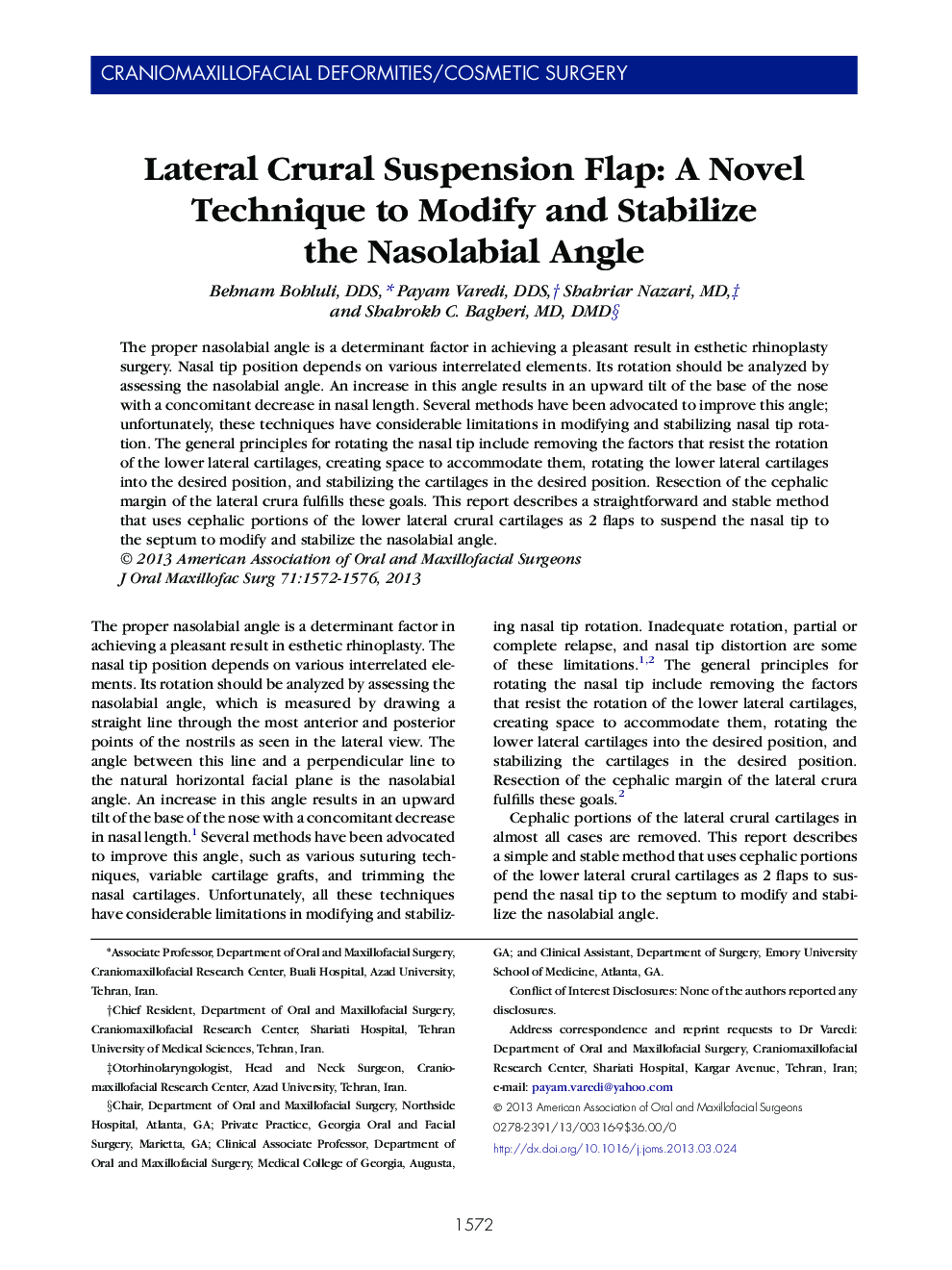| Article ID | Journal | Published Year | Pages | File Type |
|---|---|---|---|---|
| 6054394 | Journal of Oral and Maxillofacial Surgery | 2013 | 5 Pages |
Abstract
The proper nasolabial angle is a determinant factor in achieving a pleasant result in esthetic rhinoplasty surgery. Nasal tip position depends on various interrelated elements. Its rotation should be analyzed by assessing the nasolabial angle. An increase in this angle results in an upward tilt of the base of the nose with a concomitant decrease in nasal length. Several methods have been advocated to improve this angle; unfortunately, these techniques have considerable limitations in modifying and stabilizing nasal tip rotation. The general principles for rotating the nasal tip include removing the factors that resist the rotation of the lower lateral cartilages, creating space to accommodate them, rotating the lower lateral cartilages into the desired position, and stabilizing the cartilages in the desired position. Resection of the cephalic margin of the lateral crura fulfills these goals. This report describes a straightforward and stable method that uses cephalic portions of the lower lateral crural cartilages as 2 flaps to suspend the nasal tip to the septum to modify and stabilize the nasolabial angle.
Related Topics
Health Sciences
Medicine and Dentistry
Dentistry, Oral Surgery and Medicine
Authors
Behnam DDS, Payam DDS, Shahriar MD, Shahrokh C. MD, DMD,
